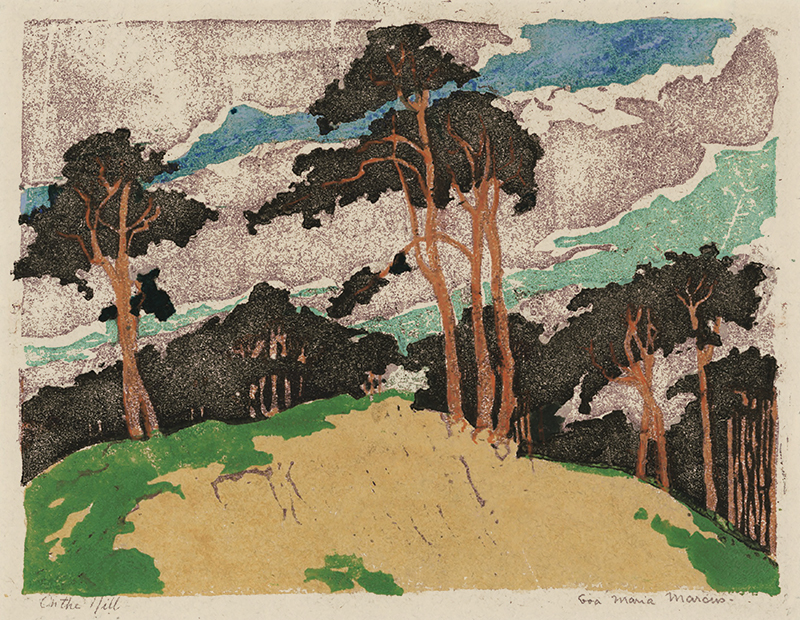
19th, 20th & 21st Century Fine Prints
707-546-7352 · fax 707-546-7924 · web: www.annexgalleries.com · email: artannex@aol.com
On the Hill; a.k.a. Pine Forest by Eva Maria Marcus

On the Hill; a.k.a. Pine Forest
Eva Maria Marcus
On the Hill; a.k.a. Pine Forest
Eva Maria Marcus
1889 - 1970 (biography)Another impression of this composition, printed in different colors was included in the 2025 exhibition "Past Present Future by the Association of Women Artists" in Berlin, Germany. Here, Marcus intersperses saturated jewel tones with a pale plum cloudbank to portray a moody afternoon in a park.
As noted in our biography, little is known about Eva Maria Marcus, a German artist born in 1889 in what was Tilsit, Lithuania (now Sovetsk, Russia). Though her family was of Jewish heritage, they had converted to Christianity sometime in the 19th century. This would become a contention for her in the 1930s as it did with many artists during the rise of Nazi powers. Marcus studied at the Royal Art School in Berlin and with Emil Orlik and Lovis Corinth and exhibited regularly with the Reich Association of Visual Artists and the Association of Women Artists in Berlin. However, in the late 1930s she was expelled from these groups, and was sent briefly to a concentration camp in 1944. Much of her work was lost during this time.
Following the war, Marcus was accepted as a refugee into Northwest Germany, where she continued to work and teach. She became a member of the General German Art Cooperative, and worked as a drawing teacher in Berlin-Lichterfelde. In addition to her art and teaching career, she was a vocal advocate for working class women artists, and upon her death in 1970 she bequeathed her estate to a fund for women artists in need. She died in 1970.
Marcus, like many German printmakers of the Arts and Crafts era, found her stride on the heels of the Vienna Secessionists, many of whom who argued in favor of printmaking for its aesthetic possibilities rather than just for commercial use. By the 1910s the "art for all" movement was gaining momentum, as was the recognition of women artists as equal contributors to the art world.


